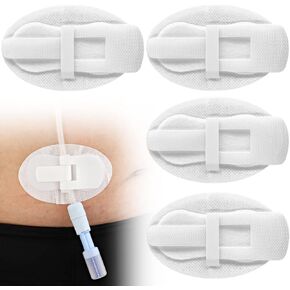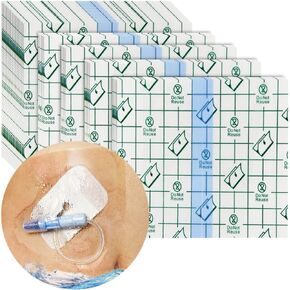- Shopping, made easy.
- /
- Get the app!
Keep tearing the skin when you changing the bedsore bandages? When it comes to non-adherent wound dressing, silicone wound contact layer is a primary dressing for use when adherence to the wound is a potential problem.
Silicone wound contact layer minimizes discomfort and potential trauma during removal
Soft silicone contact wound dressing for first and second degree burns won't disturb the granulation and epithelization processes, which are crucial to the formation of new tissue
Allows fewer dressing changes, fewer trauma during dressing removal, fewer disturbances to the wound
Silicone wound contact layer for leg ulcer prevents an outer dressing from sticking to the wound the skin around the wound
Open perforated structure allows exudate to pass vertically into the outer absorbent dressing
Seals the wound margins to protect skin from damaging leaks and maceration
High transparency perforated design allows wound inspection during application and easy delivery of topical treatments without removing contact layer
Flexible conforms to the shape of the wound and body contours for comfortable
Ideal for use on many different wounds including Bedsore leg ulcer skin tears, skin abrasions, blistering and lacerations, surgical wounds, partial thickness burns, leg and foot ulcers, dry to heavy drainning superficial wounds and fragile skin wounds
Designed for the treatment of postoperative wounds, first-and second-degree burns, partial to full thickness wounds, stage I-IV pressure ulcers and arterial and venous leg ulcers
As a carrier for topical ointments as well as in conjunction with negative pressure wound therapy dressings
Note: Use with secondary absorbent dressings
Contraindications: Third-degree burns and individuals with known sensitivity to silicone
 Feeding Tube Cover Catheter Fixiation J Peg Tubing Pads Supplies, Foley Drain Tubing Adhesive Patch Peritoneal Dialysis Stickers Stabilization Device Accessories(Pack of 10)
KWD 4
Feeding Tube Cover Catheter Fixiation J Peg Tubing Pads Supplies, Foley Drain Tubing Adhesive Patch Peritoneal Dialysis Stickers Stabilization Device Accessories(Pack of 10)
KWD 4
 PD Belt Peritoneal Dialysis Catheter Holder Comfortable Protector with Slits Pouch for Secure G J Feeding Tube Accessories Men Women Black
KWD 7
PD Belt Peritoneal Dialysis Catheter Holder Comfortable Protector with Slits Pouch for Secure G J Feeding Tube Accessories Men Women Black
KWD 7
 10"x12" Peritoneal Dialysis Catheter Ostomy Shower Cover Waterproof Shield Central Line, G Tubes Feeding/J Transparent Wound Protector Chest Port, 25PCS
KWD 8.500
10"x12" Peritoneal Dialysis Catheter Ostomy Shower Cover Waterproof Shield Central Line, G Tubes Feeding/J Transparent Wound Protector Chest Port, 25PCS
KWD 8.500
 Comfortable Breathable Peritoneal Dialysis Belt PD Catheter Holder Accessories Adjustable Feeding G Tube Pouch Safety Secure Transfer Set Peg Tubing Supplies Men Women, Beige Small
KWD 6
Comfortable Breathable Peritoneal Dialysis Belt PD Catheter Holder Accessories Adjustable Feeding G Tube Pouch Safety Secure Transfer Set Peg Tubing Supplies Men Women, Beige Small
KWD 6